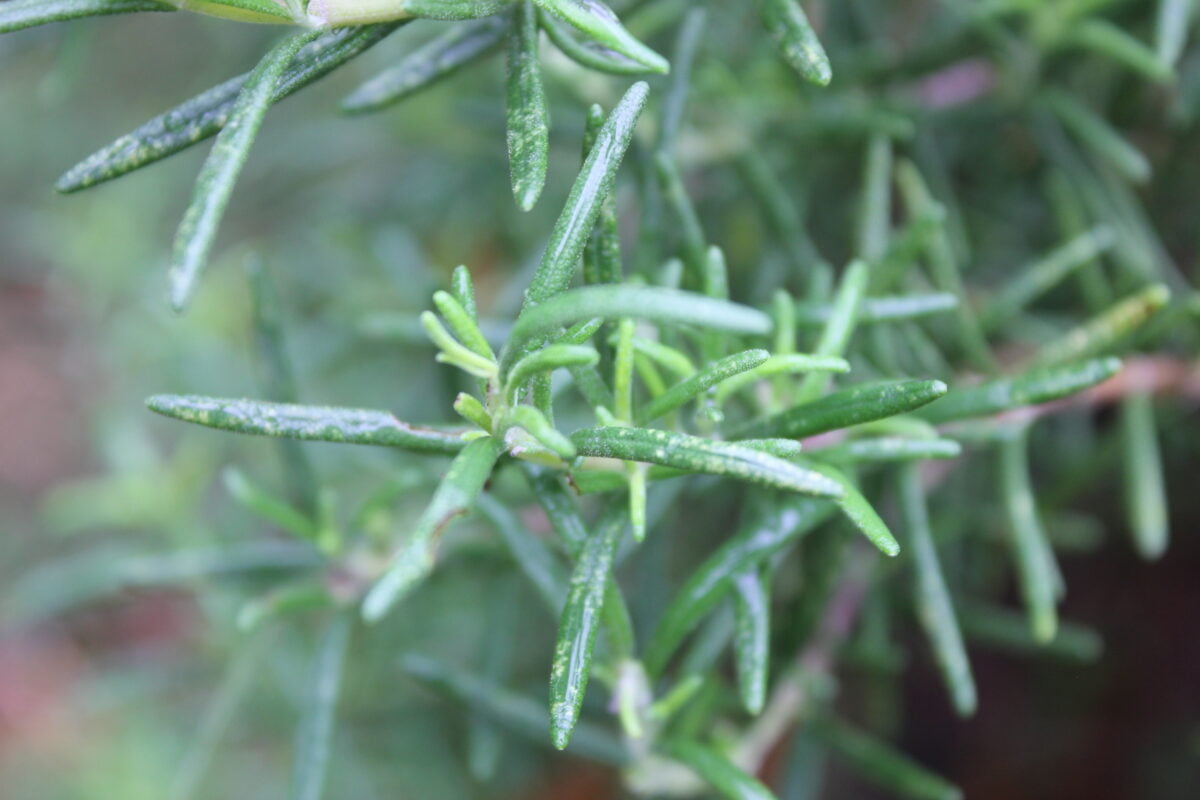Scientific name: Salvia rosmarinus L (previously Rosmarinus officinalis L)
Other common names: Compass Plant, Compass Weed, Encensier/Incensier (Old French), Herbe Aux Couronnes, mi die xiang / 迷迭香 (Traditional Chinese Medicine), Old Man, Polar Plant, Romarin, Romarin Des Troubadours, Romero (Spanish), Rose de Marie, Rose Des Marins, Rosée De Mer, Rosemarine, Rosmarinus officinalis, Rusmari / Rusmary (Ayurveda), ‘Gulmehendi’ (गुलमेहेंदी) (Hindi).
The genus and common name of this plant are derived from the Latin ros meaning “dew” and marinus “of the sea” in reference to the origins of this plant on the Mediterranean coast; this plant likes lots of sun and warmth, but it also needs plenty of well draining water.1
Identification
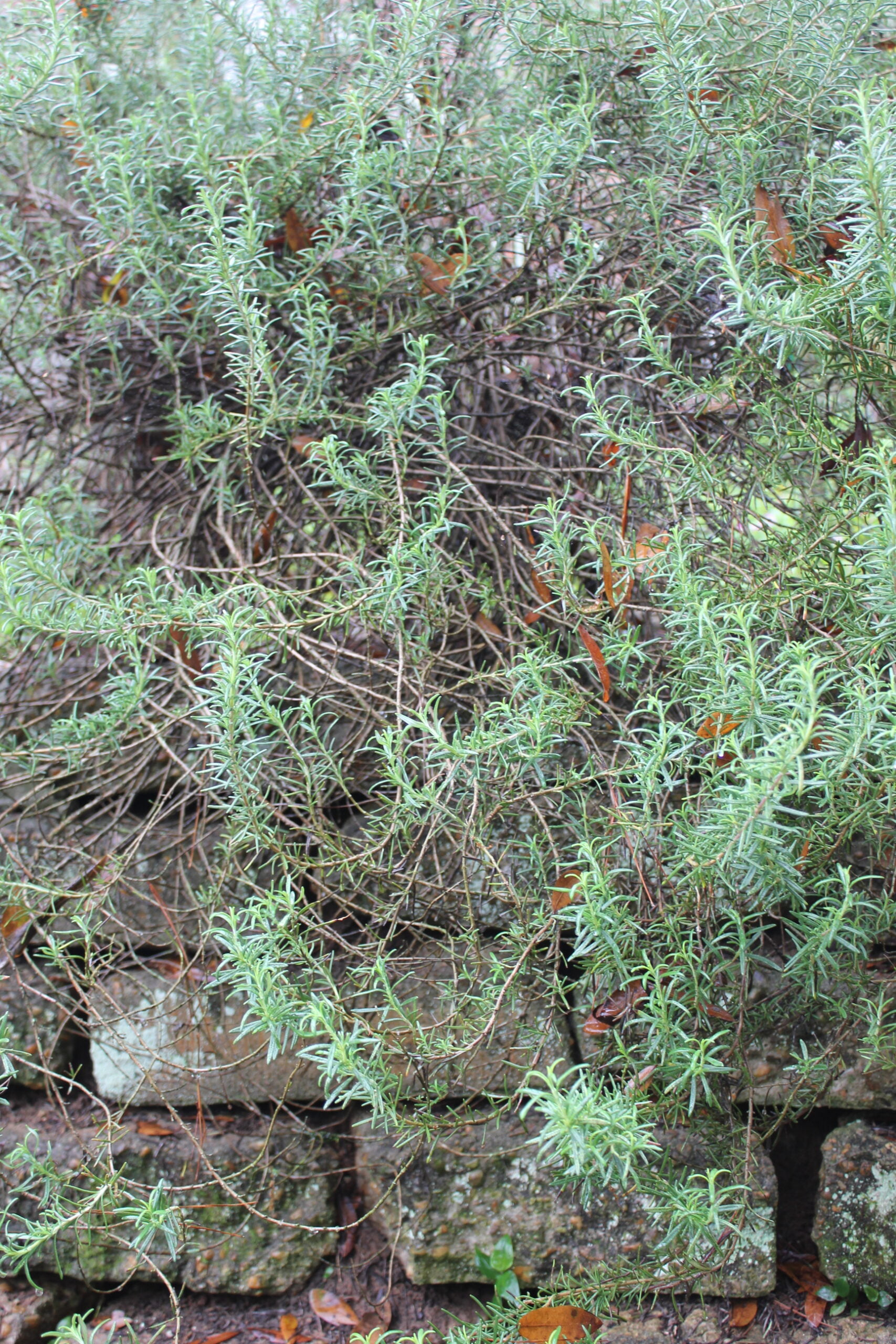
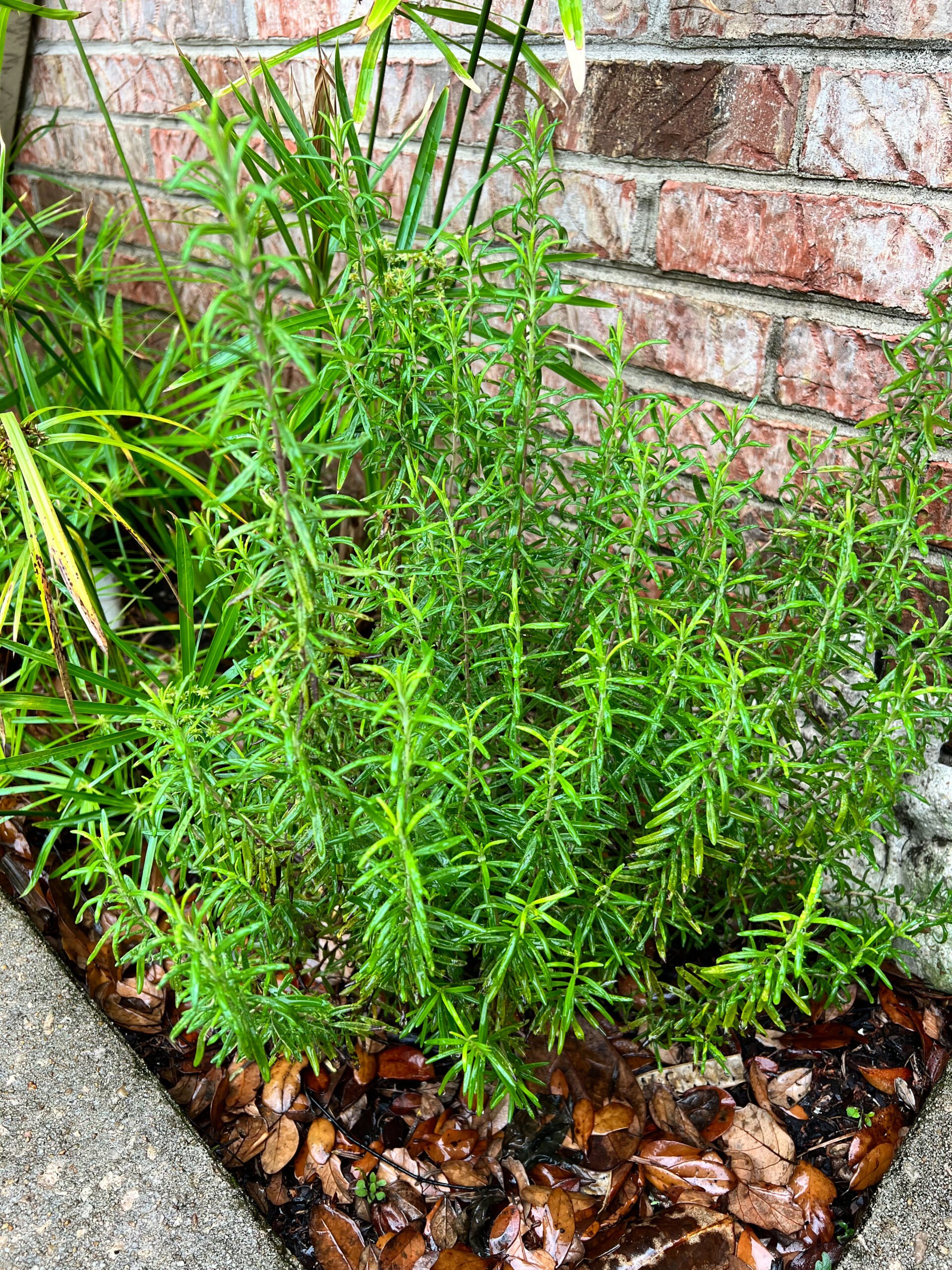
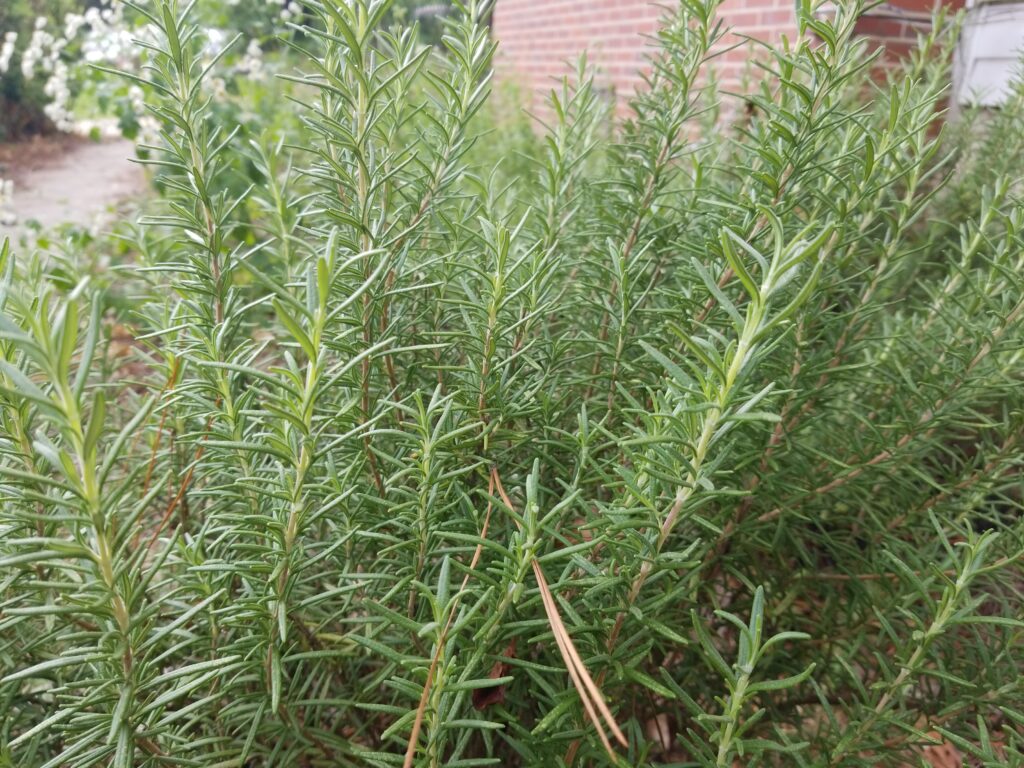
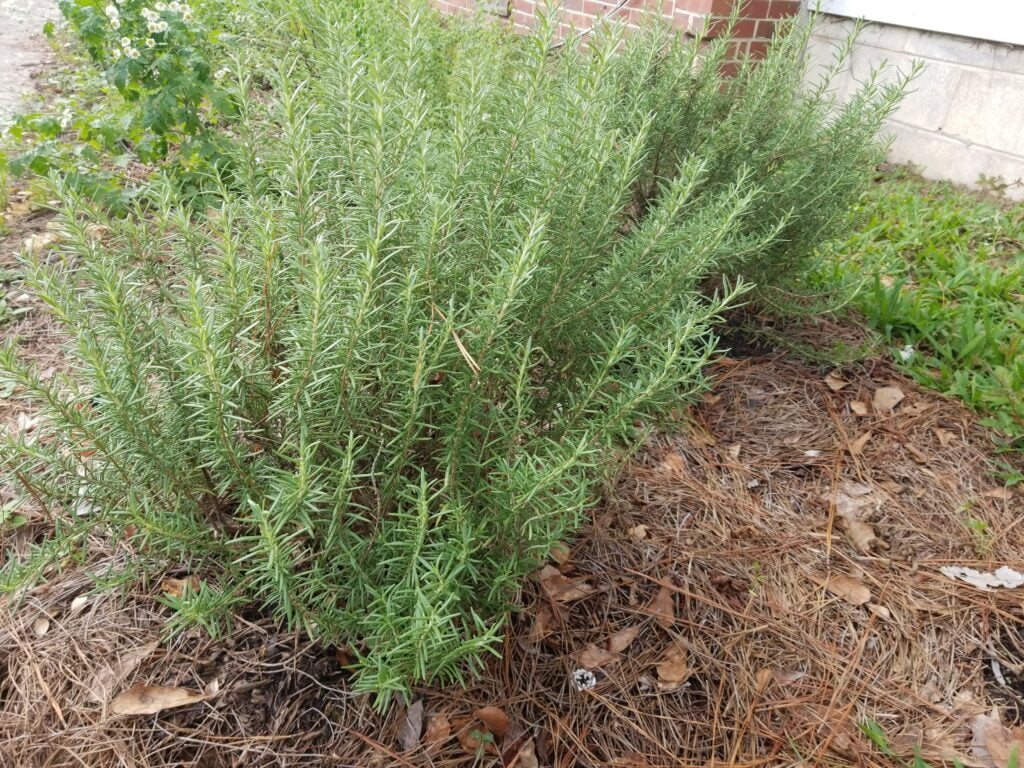
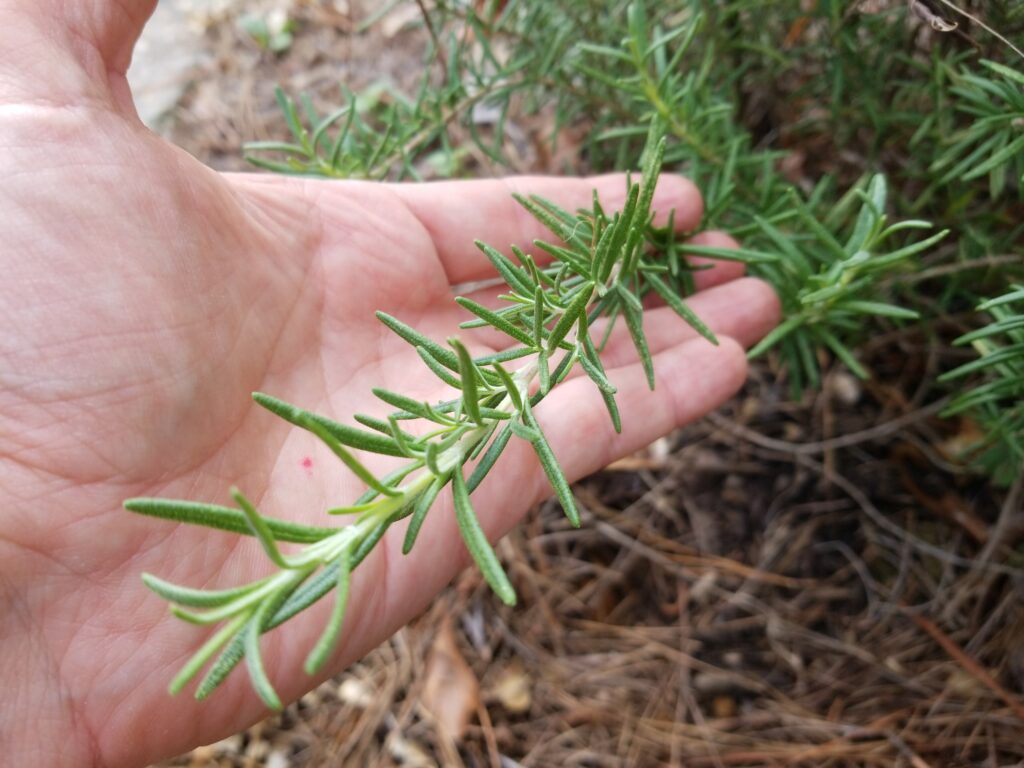
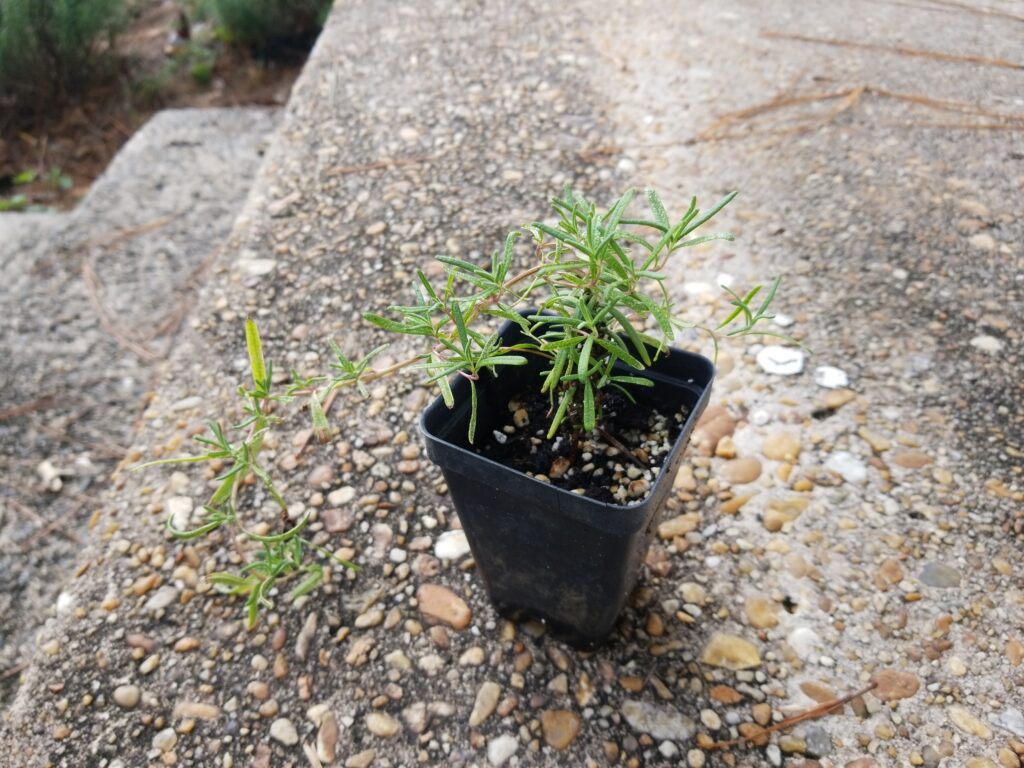
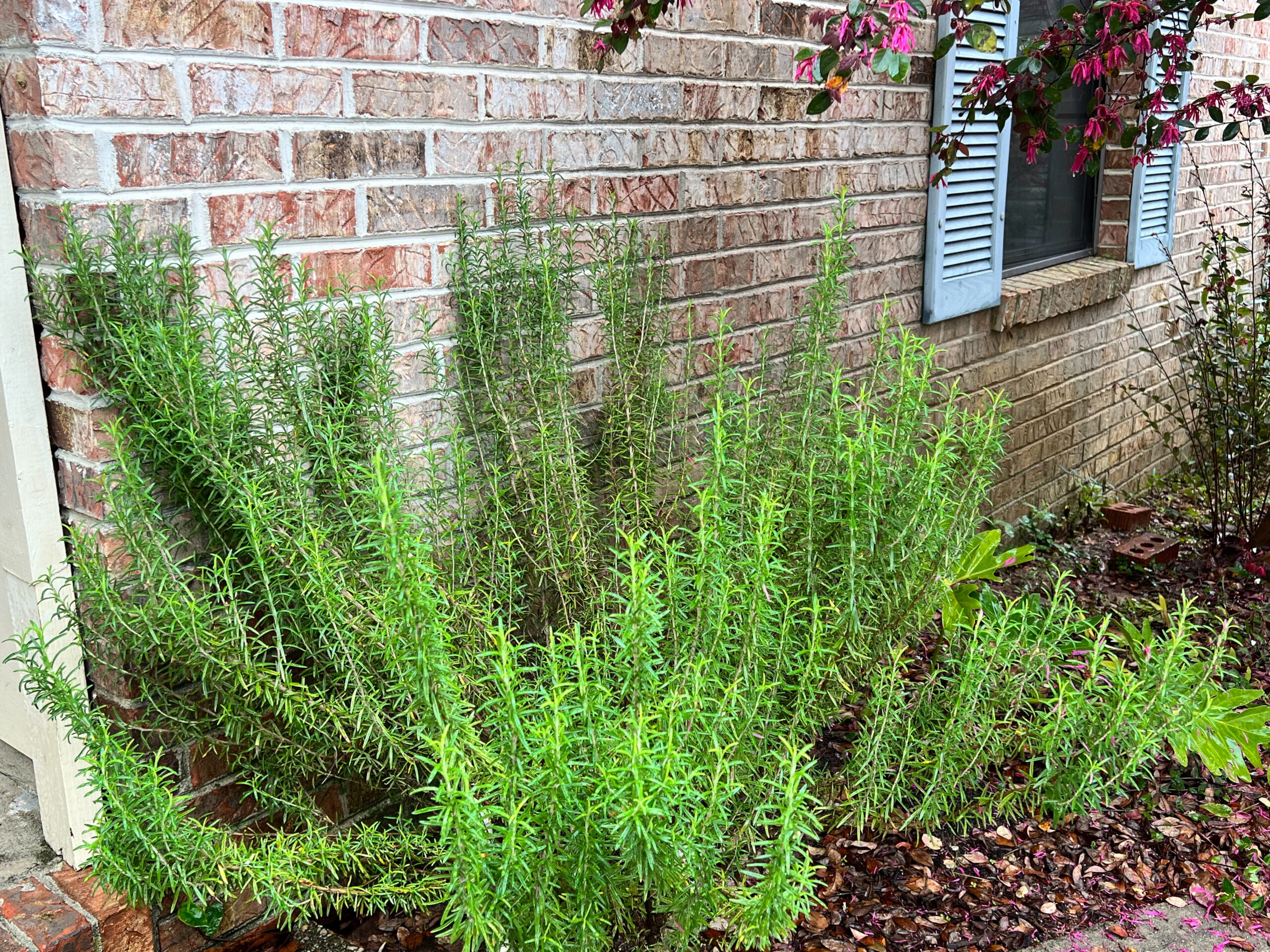
Rosemary is a highly aromatic woody, evergreen shrub with leaves similar to certain conifer tree needles, like a less dense fraser fir holiday tree. It can grow up to 4 feet (1 meter) high. The leaves are dark green above and pale green on the underside, with a distinctive mid vein.2 That is why it is often shaped to look like a small holiday tree for adorning tabletops during winter holidays. It’s small flowers are a pale to blue-violet color and appear in winter or spring. They are two lipped and grow in a cluster of five to seven blossoms.
Other Plants Commonly Called Rosemary
Florida rosemary (Ceratiola ericoides) is native to the southeast. Florida rosemary is important to sandy coastal environments, regenerates by seed after periodic forest fires, and is unrelated to the European shrub rosemary. Florida rosemary, unlike Salvia rosmarinus, is not edible. Characteristics that differentiate it from the edible rosemary include: 1)this shrub has yellow or brown flowers and 2)its leaves are evenly green on the top and bottom, and have a rounded overall shape.3
Another Florida native is False Rosemary, also known as Beach rosemary (Conradina canescens), which can be found along the Florida panhandle and is a part of the mint family. This one is considered edible and often used in place of Rosemary (Salvia rosmarinus L.).4 The best way to tell this plant apart form Salvia rosmarinus is that the leaves have a more minty fragrance when crushed. The leaves are also shorter and grow densely on green stems that branch off of central woody stems rather than directly from the woody stem.5
Growing/Foraging
Rosemary grows wild in the Mediterranean, where it is native. It is now cultivated throughout the United States.6 Drought tolerant and pest resistant, rosemary is a staple of many north Florida gardens. Rosemary is tolerant of most soil conditions, as long as they are not water-logged, but prefers a light soil. Sandy soil will fully satisfy its meager feeding needs. It also prefers more alkaline as opposed to acidic soil (pH 7–7.8) and a sunny position. To make soil more alkaline you can simply add crushed eggshells to it. You can propagate this plant by seed, cuttings, layering, & division of roots. The seeds can be difficult to germinate (can take up to 2 months) and as such cuttings are most often recommended. Cuttings should be started from new growth tips.
Rosemary can be harvested for fresh kitchen (culinary) use or twigs can be cut and hung to dry. Once dried the needles can be stored in seasoning containers or jars.
Medicinal and Food Properties
Rosemary is a potent antioxidant, antiseptic, and antispasmodic.
Antifungal
It was found that an oil concentration of 8% was capable of inhibiting the growth of Candida sp (an excess of which often causes vaginal yeast infections). A similar study evaluated the effect of rosemary as an alcohol based extract against two dermatophytes, Microsporum gypseum and Trichophyton rubrum. A dermatophyte is a pathogenic fungus that grows on the skin, mucous membranes, hair, nails, feathers, and other body surfaces, causing ringworm, athlete’s foot, nail fungus, and jock itch, and related diseases. A concentration of 10% R. officinalis extract was responsible for 86% inhibition of fungal growth.
Cancer
R. officianalis was shown to have a protective role against skin cancer (melanoma) when used topically.7 Many studies show that the herb has a wide range of anti-cancer properties and has a measurable effect when taken orally on cancer of the colon, mouth, breast, and prostate.8
Cold and Flu
Rosemary has a long history of use to alleviate symptoms of colds due to its antiviral and antimicrobial properties. Inhaling its steam can help the respiratory tract fight cold and flu viruses and improve nasal and chest congestion (see our recipe section for instructions on how to create a rosemary steam tent). A gargle can also be created from it for sore throats: just boil water, pour over a handful of rosemary, and let it steep for about 10 minutes.
Cold Sores
In studies rosemary essential oil was found to inhibit Herpes simplex virus-1 (HSV-1) plaque formation (infecting healthy cells). Plaque formation is what can be seen in petri dishes as bacteria and viruses spread to attack cells that have been placed there.9
Cognitive decline & resilience
The results of a study suggest that carnosic acid, found in rosemary, may shield the brain from free radicals, lowering the risk of strokes and neurodegenerative diseases like Alzheimer’s and Lou Gehrig’s (BIMR 2007). Free radicals are unstable atoms that can damage cells, causing illness and aging.
Digestion
Rosemary has a soothing effect on the digestive system. It promotes liver function and the production of bile, which helps with digestion. Adding this herb to foods is a simple way to help your digestive system.
Hair Loss
Hair loss, often known as alopecia, can be the result of excess testosterone in the blood capillaries. Mice treated with an alcohol extract of rosemary (2mg/day) showed a significant increase in hair growth after the 16th day of treatment compared with those in the control.10
Reproductive Care
Rosemary has the ability to relieve pain and relax muscles, including the muscles of the uterus. For this reason, it is said to be helpful for inducing menstruation (in other words, it acts as an emmenagogue or period starter). It also has a history of use as an emergency contraception agent. In Materia Medica and Therapeutics (1857) Thomas Duché Mitchell is quoted as writing that the “…oil of rosemary and a strong tea of the leaves are among the numerous devices in all large cities for inducing abortions.” The plant was also known to have been used by Central American folk healers in combination with other herbs, like sea wormwood (Artemisia maritima). This use was also later mentioned as observed in Mexico.11 While there is no research based evidence that rosemary can cause abortion on its own, studies on female rats do indicate that it inhibits implantation of a fertilized egg. 12 Studies on male rats also noted decreased creation of sperm (spermatogenesis). 13 It had no ill effects (no developmental, teratogenic, defects) after implantation.
Respiratory Ailments
Like with the digestive system, rosemary has a soothing effect on the respiratory system. Inhaling its steam can be extremely beneficial.
Topical (Uses for skin)
Aspects of this plant make it particularly useful for its anti-inflammatory capacity, wound-healing potential, effects on tissue survival, anti-skin-cancer effects, antinociceptive effects (blocking the perception of pain), antifungal effects, and UV-protective activity. R. officinalis extract was shown to possess strong antioxidant activity, supporting its potential as an anti-inflammatory agent. The extract also exhibited antiplatelet activity, which is instrumental for the improvement of blood circulation through the smallest blood vessels of the body (microcirculation). Rosemary can also mitigate skin irritation (dermatitis) when introduced at the same time as an irritant, although it was unable to treat induced skin irritation. This means it can have an antihistamine effect (prevent allergic reaction) but it can not undo it once it has commenced.
Wound healing was tested for diabetic and non-diabetic animals and wound healing was noted in both cases. General healing of a wound exposed to a solution of Candida albicans, a common fungal infection caused by excess yeast, was tested in three groups: 2% rosemary, 4% rosemary, and a control group. The results showed that wound healing in the 4% group was faster than in the other groups.14
Trauma (energetic)
Rosemary is known to strengthen the nervous system. It shows important clinical effects on mood, learning, memory, pain, anxiety, and sleep.15
Safety
Not recommended during pregnancy. The plant has a history of being used to stimulate menstruation (emmenagogue) and is thought to end a pregnancy (abortifacient) at certain dosing levels.
Rosemary may also increase the risk of bleeding. Caution should be taken with individuals on blood pressure medication.
Recipes
-
Té Corazón Lastimado (Wounded Heart Tea)
Poniendo a Tierra el Dolor Con la Verdad La semana pasada recibimos la noticia devastadora de que une queride miembre de nuestra comunidad fue disparade por la policía en el condado de DeKalb de Atlanta, Georgia, mientras defendía el bosque Weelaunee de destrucción. Se devastarán ochenta y cinco (85) hectáreas de tierra ocupada por colonos,…
-
Rosemary Steam Tent
Rosemary is a great herb for a congestion-breaking herbal steam.
-
Rosemary Mashed Potatoes
This is an easy and quick side dish that can serve a large group or leave leftovers for the next day (about 12 servings). It is also an amazing way to get the nutritional and medicinal benefits of rosemary.
-
Rosemary Glycerite
Rosemary infused into vegetable glycerin provides a concentration of herbal constituents in a portable and convenient form.
-
Herbal Insect Repellent
An alcohol based insect repellant spray made with beautyberry, catnip, dog fennel, lemon balm, lemongrass, and neem oil.
-
Heart and Mind Glycerite
A simple glycerite to support the memory, promote alertness and reduce anxiety during heightened stress.
-
Fire Cider
Fire cider helps warm up the body, stimulates the immune system, and fights bacteria and viruses common during cold and flu season.
Sources

